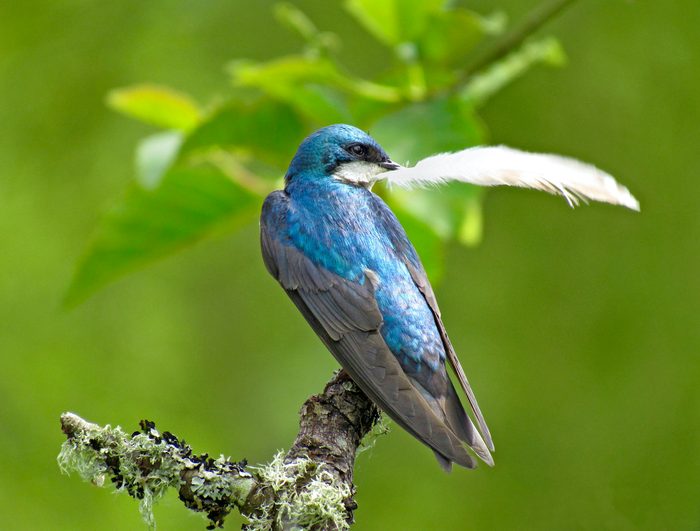
Facts About Bird Nests
Nests are generally thought of as a bird’s home, but it is more appropriate to consider them a nursery for raising baby birds. Sarah Winnicki-Smith, a Ph.D. candidate in avian evolutionary ecology at the University of Illinois Urbana-Champaign, helps clear up other common confusions with nesting. “Adult birds aren’t always hanging out at the nest like we might see on television shows,” Sarah says. Find out how birds build nests, how long it takes for bird eggs to hatch, how long baby birds stay in the nest, and what baby birds eat.
Learn about 9 different types of bird nests and how to spot them.
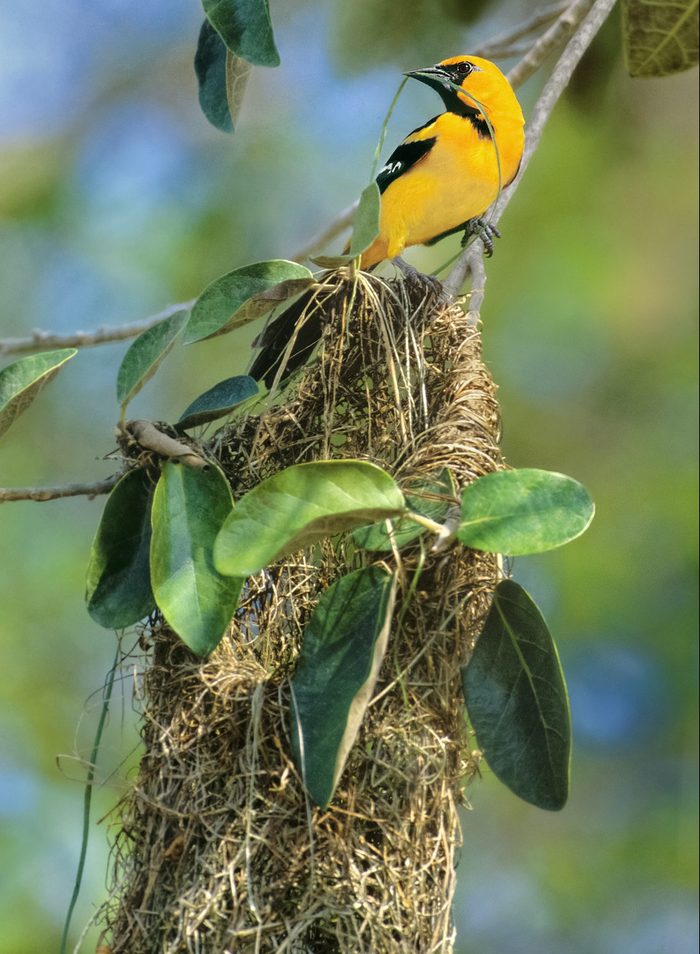
How Do Birds Build Nests?
Not all bird nests look like the classic cup of woven sticks. The architecture of some nests is quite impressive. American dippers build nearly waterproof nests with moss exteriors along banks of raging streams. Many species add sprigs of certain plants to serve as pest repellents. Discover how orioles weave elaborate nests.
During graduate work on grassland birds, Sarah observed meadowlarks weaving grass domes with tunnels facing into the prevailing winds to keep nestlings cool on hot summer days. Psst—this is the only bird nesting material you should put out.
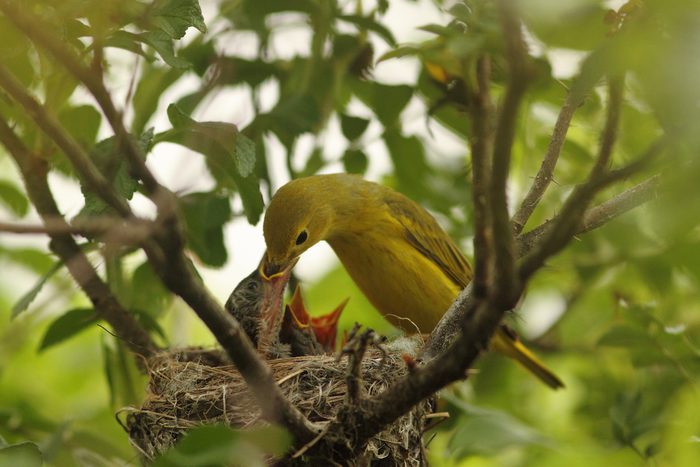
Where Do Birds Build Nests?
Kenn and Kimberly Kaufman say, “Birds have preferences for the general kind of situation where they’ll build nests, such as in a dense, low shrub or a tall tree, but most are not choosy about the exact species of plant. Yellow warblers often nest in willows, Baltimore orioles often in elms, and scarlet tanagers usually in oaks, but all of these birds frequently choose other kinds of trees as well. Only a few North American birds are truly specialized in their choice of plants for nest sites. One example is curve-billed thrashers in the Southwest, which usually place their nests among the spiny arms of a cholla cactus.”
Birds also adapt to local conditions. Great horned owls traditionally nest in trees, but they alternatively use ground sites, cliffs, saguaro cactus tops or even buildings. Notoriously, owls often take over old nests of hawks, crows, herons or squirrels.
Learn everything you need to know about a cardinal nest.
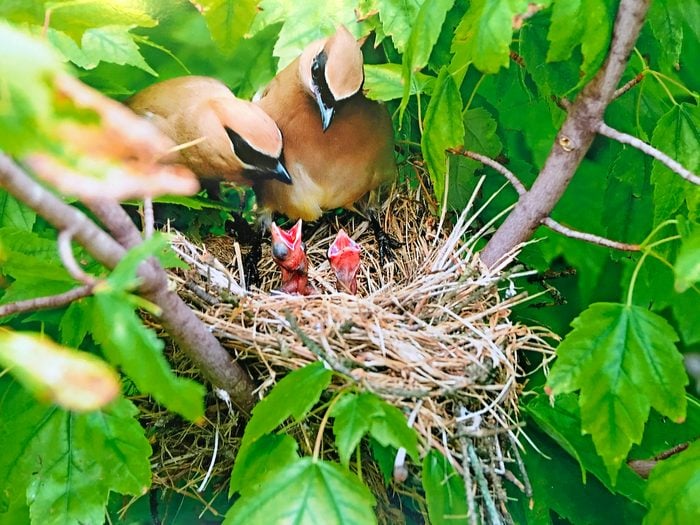
Do Male Birds Make Nests?
Nest construction varies across species. Many times, nest building is a collaborative effort. But for some species, such as red-winged blackbirds, the males establish territories and leave the nest construction to the females. For many wrens and other birds, male bird dads construct several nests within the territory, and females choose mates based partially on these nests. The females freshen up the chosen nest before laying their eggs.
For most bird species, males and females are ultimately both involved in fledging the young. Sarah says,“To be successful requires a combination of nest construction, sitting on eggs and bringing food resources back.”
See adorable photos of bird mothers with babies.
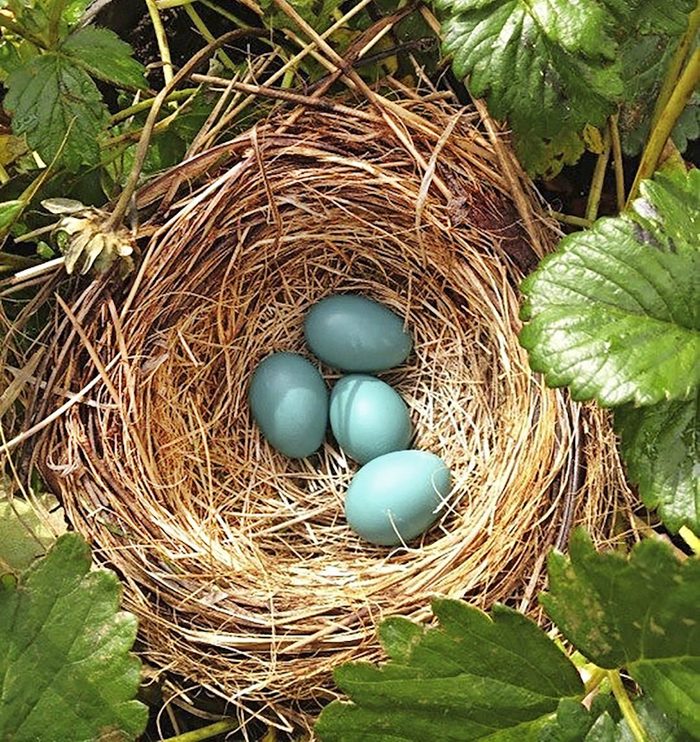
When Do Birds Build Nests?
It’s an oversimplification to think that birds nest only in summer. In the southern reaches of the United States, breeding can happen during any month. Some birds, such as great horned owls, can hatch as early as January in certain parts of the southern U.S. Even in the North, raptor courtship may start by late fall, and female owls, hawks and eagles may be sitting on eggs by February.
American goldfinches are famously late-season nesters. Their breeding cycle matches up with crops of native thistles. This linkage with weather and food is what drives the timing of nesting, which can happen as late as September.
“In the Midwest, American robins start building nests when it is still cold, but warmer temperatures and food resources are available when the young hatch,” Sarah says.
Kenn and Kimberly Kaufman add, “In North America, most birds nest in late spring and summer, but some activity—adult birds building nests, laying eggs and raising young—happens during every season. Baby birds fresh out of the nest can appear almost anywhere, including in small backyards or city parks.”
Find out when bluebirds nest and lay eggs.
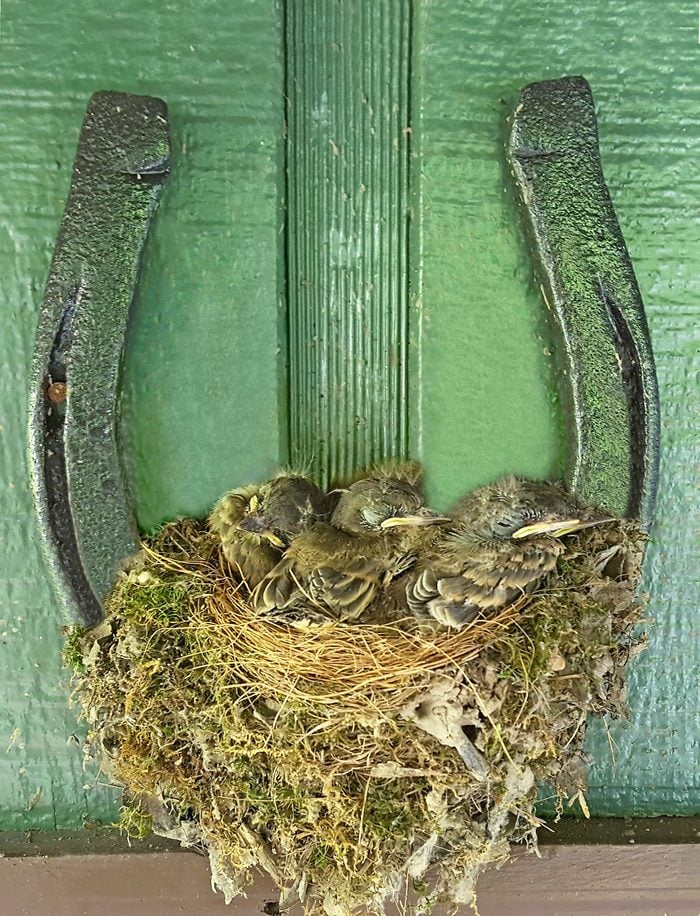
How Long Does It Take for Bird Eggs to Hatch
There are generally two approaches to egg laying and they affect the time a bird egg takes to hatch. Before eggs can hatch, they must be incubated. The warmth of incubation helps the embryo to develop inside the egg.
Altricial species (such as songbirds) are born nearly featherless. These small backyard birds need only 11 to 14 days of incubating before hatching. The helpless hatchlings depend on adults for warmth and food for weeks before fledging. Common redpoll eggs hatch in about 10 days. Blue jay eggs may take up to 16 days to hatch.
Precocial species (such as shorebirds, waterfowl and grouse) lay larger eggs and have longer incubation periods. Great horned owl eggs hatch in about 30 days. Some hawks or geese take about a month to hatch, and it’s as much as 80 days for huge seabirds such as albatrosses. Hatchlings hit the ground running.
When a female bird lays a clutch of eggs, she may delay incubation until the clutch is complete so that all the eggs will hatch at around the same time. However, barn owls begin incubating after laying the first egg and may lay up to seven eggs at intervals of two or three days. So their eggs hatch one at a time, with the first hatchlings much larger than their younger siblings.
What is a fledgling? Learn the five stages of a baby bird’s life.
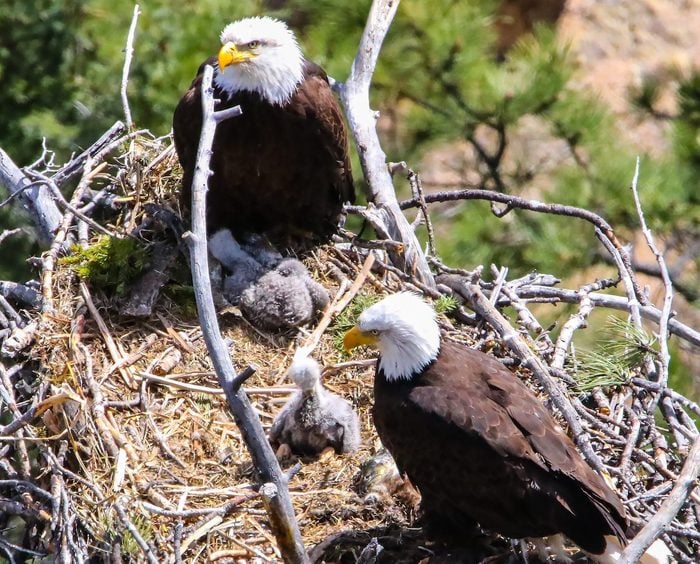
How Long Do Baby Birds Stay in the Nest?
This varies a lot depending on the species. Young birds born with down feathers may leave the nest to follow their parents within a few hours after hatching, as is the case for baby ducks, plovers or pheasants. Killdeer, quail, grouse, wild turkeys and sandpipers are up and running around as soon as they hatch.
Small songbirds develop rapidly thanks to their hardworking parents constantly bringing them food. They may leave the nest eight to 12 days after hatching. Most baby birds stay in the nest for at least 10 days in the nest before flying off on their own. For birds like Baltimore orioles, bluebirds and rose-breasted grosbeaks, this happens typically between two and three weeks old.
Some big birds, like owls, hawks and eagles, develop much more slowly. Bald eagles will stay in the nest up to 98 days! And the California condor, one of our largest North American birds, may not leave the nest until it’s 6 months old.
Discover 9 proven tips to attract nesting birds.
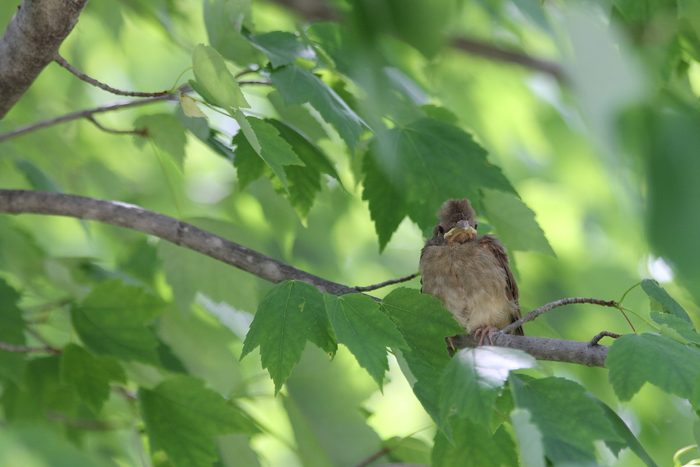
How Long Does It Take for Baby Birds to Fly?
The Kaufmans say, “Many songbirds can barely fly when they leave the nest. Young northern cardinals depart the nest at only 7 to 9 days old and may not be able to fly well for another week or more. But they usually get around well enough to avoid predators and find food.
On the other hand, baby barn swallows may not leave the nest until 20 days after they hatch. Swallows feed on flying insects that they grab in midair, and young barn swallows wait until their wings are fully developed before they take off. For swallows, swifts and hawks, flight is such an essential part of their lifestyle that the young stay close to their parents at first and may learn to fly partly from watching them.”
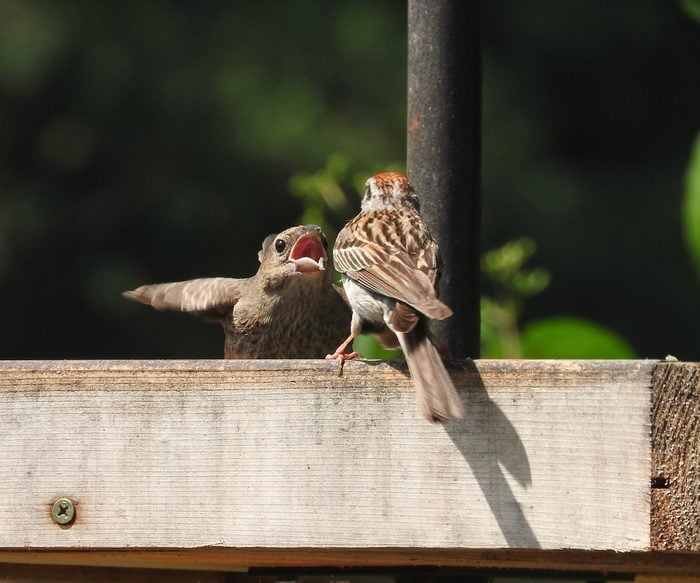
Some Birds Lay Eggs in the Nests of Others
Around 1% of birds don’t build a nest of their own. Instead, these brood parasites lay eggs in the nests of other species. Brown-headed cowbird eggs have been documented in the nests of more than 200 other types of birds.
“It’s pretty amazing that these baby birds can grow up in such different environments,” says Sarah.
Learn how to keep house sparrow nests out of bluebird boxes.
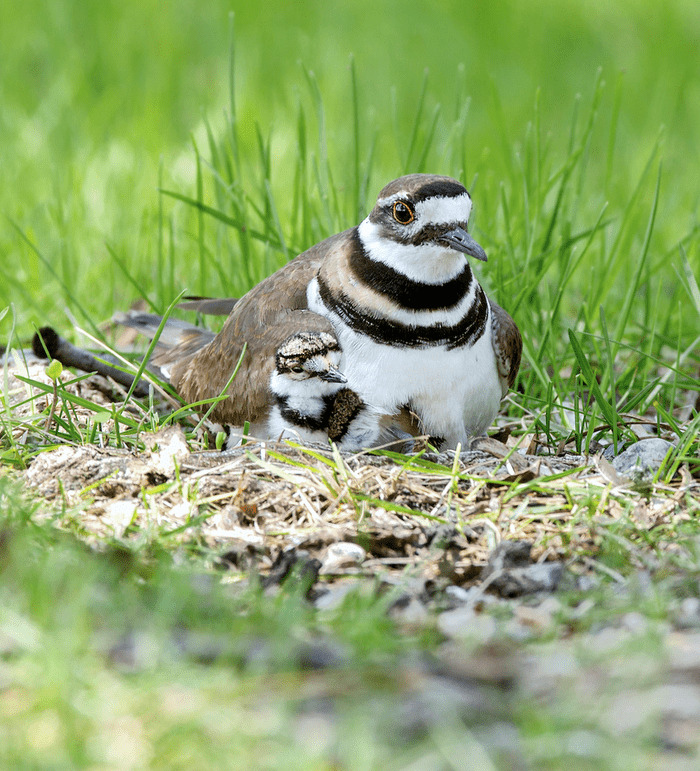
How to Get Involved as a Nest Monitor
Project NestWatch is a community science project that tracks the status and trends of nesting birds. Anyone can participate in this exciting project administered by the Cornell Lab of Ornithology. Nest monitors visit sites every three to four days and collect data on the contents of nests, including egg numbers and hatchling growth. Here’s how to participate:
- Pass an online certification quiz at nestwatch.org
- Locate a nest (or multiple nests!)
- Collect data
- Submit results online or via the mobile app
Next, learn how to choose the perfect chickadee nest box.
